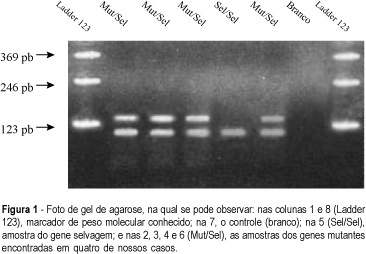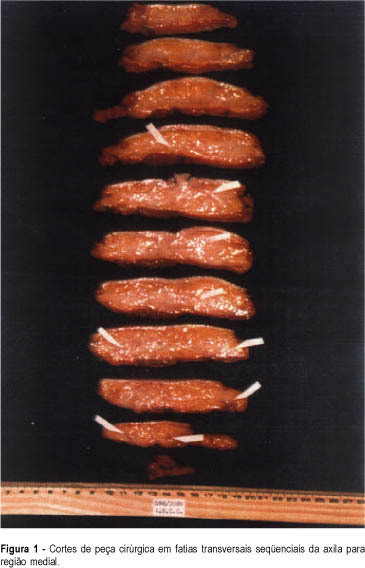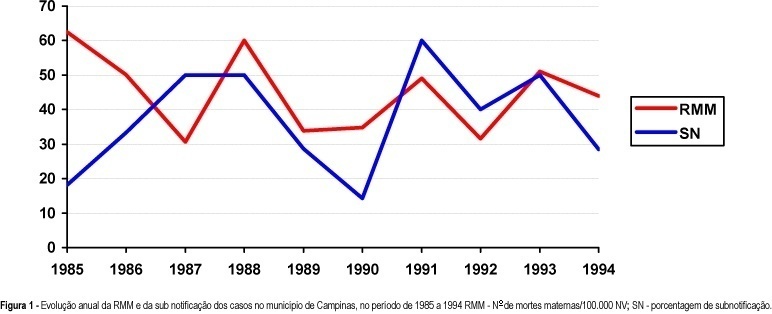Summary
Revista Brasileira de Ginecologia e Obstetrícia. 1999;21(1):47-54
DOI 10.1590/S0100-72031999000100008
Purpose: to evaluate clinical and ultrasonic findings in patients with pelvic tumors at postmenopause and to correlate them with the final diagnosis. Patients and Methods: thirty-six postmenopausal women with pelvic tumor diagnosis were prospectively evaluated through clinical examination and endovaginal ultrasonography. Clinical follow-up with no surgical procedures was indicated for anechoic cystic tumors with or without thin unique septation and volume under 50 cm³. Needle aspiration was indicated for tumors with the same aspect, and volume of 50 to 100 cm³, whereas exploratory laparotomy was performed in the remaining patients. Diagnosis defined two groups of patients: benign (28) and malignant (8) pathologies. Results: anechoic cystic tumor with or without a thin septum indicates benignity (p = 0.0091). Tumors with solid areas indicate malignancy (p = 0.0024). Ascites correlates with malignancy (p = 0.0278). Heterogeneity, thick capsule, thick septa, and papillary projections predominated in malignancies but without no statistical significance (p > 0,05). Tumor volume indicates malignancy, with a median of 85.2 cm³ in benign tumors and 452.5 cm³ in malignancies (p = 0.0048), with a cutoff at 295 cm³ (sensitivity = 83.3% and specificity = 85.2%). Following this protocol, all malignancies were submitted to surgery and 11 benign tumor patients were treated with a conservative protocol (39.3% of all benign patients). Conclusion: conservative management is an adequate protocol for women with anechoic pelvic tumors with low volume, with or without single thin septum and without ascites. Differentiation between benign and malignant of complex and/or high volume tumors requires complementary investigation.

Summary
Revista Brasileira de Ginecologia e Obstetrícia. 1999;21(1):41-45
DOI 10.1590/S0100-72031999000100007
Purpose: to demonstrate a new approach to treatment of endometrial cancer. Methods: Between February, 1996 and February, 1998, twelve patients with endometrial cancer, diagnosed by hysteroscopy and biopsy, were submitted to pelvic lymphadenectomy and hysterectomy with salpingo-oophorectomy by laparoscopy. The mean age was 58.1 years, the mean number of gestations was 2.3 and the mean body mass index was 28.6. Results: the mean length of anesthesia was 4.8 hours. The mean time of hospital stay was 3.3 days. The total of lymph nodes obtained was 176, 104 (59.1%) being from the right side and 72 (40.9%) from the left side. The mean of lymph nodes per patient was 18.5. We observed two complications: in one case the laparoscopic procedure had to be abandoned because the patient presented a dangerous increase in intratracheal pressure and in the other case a granuloma in the vagina was observed. Conclusions: the initial evaluation of the laparoscopic hysterectomy and laparoscopy shows that we achieved good results regarding the accuracy of staging, the number of nodes and a small number (3) of complications.
Summary
Revista Brasileira de Ginecologia e Obstetrícia. 1999;21(1):33-37
DOI 10.1590/S0100-72031999000100006
Purpose: to evaluate the agreement between the urodynamic and ultrasonography diagnoses of urinary incontinence, as well as to correlate the variables of both examinations. Methodology: three hundred eighty-one patients with urine loss were selected, from the Sectior of Urogynecology and Vaginal Surgery of the Division of Gynecology, Escola Paulista de Medicina - Federal University of São Paulo. All of them were submitted to urodynamic study, according to the standardization of the International Society of Continence, and to ultrasonography of the bladder neck, with a 6 MHz trasvaginal transducer. We analyzed the maximum closing urethral pressure (MCUP) and the etiological diagnosis of the urine loss. In the ultrasonography, the position of the bladder neck was evaluated in relation to the inferior border of the pubic symphysis, and its mobility as well as the diameter of the urethra and bladder neck. The women were categoriaed according to the urodynamic study in to stress urinary incontinence, detrusor instability and mixed urinary incontinence. Results: 1) the bladder neck, at rest was most frequently above the inferior border of the pubic symphysis and, during effort, below or at the height of the bony reference, in the three groups; 2) the mobility of the bladder neck was similar in the groups; 3) there was no significant correlation between MCUP and the diameter of the urethra and of the bladder neck. Conclusion: we deem that ultrasonography of the bladder neck is always a complement to the clinical evaluation and the urodymanic study.
Summary
Revista Brasileira de Ginecologia e Obstetrícia. 1999;21(1):25-31
DOI 10.1590/S0100-72031999000100005
Purpose: This epidemiological census on health conditions of women ranging from 20 to 49 years of age was carried out at Vila Santos Dumont, Pelotas, RS, in order to quantify actions to reorganize the service developed at the local health center. Methods: Information was collected regarding age, level of education, if living with a partner, health service utilization, antenatal care characteristics, cervical cancer screening, physical breast examination and contraceptive methods used. Results: Among the 411 women, 343 (83.5%) had a medical visit during the last year. There were 18 (4.4%) pregnant women. Eighty percent of the women had a cervical smear in the past three years. We found that 47.4% of the women had their breast examined in the last year. Among the 279 women currently using some contraceptive method, 62.4% used the pill, 14.0% had performed surgical sterilization and 7.9% used IUD. Conclusions: This study was women's health diagnosis. It became possible to incorporate the epidemiological method in the health center care planning. We discuss some health actions developed to improve the community care.

Summary
Revista Brasileira de Ginecologia e Obstetrícia. 1999;21(3):127-131
DOI 10.1590/S0100-72031999000300002
Purpose: the frequency of point mutation at codon 12 of the K¾ras gene was determined in paraffin blocks of surgical specimens from patients who had ductal invasive breast cancer. Material and Methods: Fifty surgical specimens blocked in paraffin from patients with ductal invasive breast cancer, with histological degree II and III, were used. The polymerase chain reaction (PCR) was used for amplification of DNA fragments studied. The material cleavage was obtained with restriction fragment length polymorphisms (RFLP). The electrophoresis in agarose gel, with Ladder 123 (GIBCO-BRL) marker, was employed to verify if some mutation had occurred. The results were shown using ultraviolet beam and recorded by photos. Results: mutations at codon 12 of K-ras gene were found in five samples (10%) and all of them were polymorphic for this caracter. The five patients whose tumors expressed mutation were in the postmenopausal period. Four patientes had tumors of histological degree II and one, III.

Summary
Revista Brasileira de Ginecologia e Obstetrícia. 1999;21(4):187-192
DOI 10.1590/S0100-72031999000400002
Purpose: analysis of histopathologic alterations caused by neoadjuvant chemotherapy (fluorouracil, epirubicine, cyclophosphamide; FEC - 4 cycles) at the tumor site, adjacent mammary tissue and homolateral lymph nodes, as observed in sections of patients with primary breast carcinomas. Method: histological studies performed on 30 surgical sections obtained from radical mastectomy (Patey) of patients with primary breast carcinomas, who underwent prior neoadjuvant systemic therapy. Results: all sections showed tumor regression with variable intensity. This regression occurred irregularly, several refractory tumor cells remaining at the primary tumor site. Resistant tumor cells, independent of the primary tumor, were found in mammary tissue. Other histopathological findings, resulting from chemotherapy in tumoral and mammary tissues, such as calcifications and fibrosis, and in axillary homolateral lymph nodes were obtained. Conclusion: the effect of neoadjuvant chemotherapy is not uniform, refratory tumor cells remaining not only at primary tumor site, but also in distant regions. Furthermore, we found no correlation between the regression of the tumor and the axillary metastatic lymph nodes. Thus, a conservative surgery after neoadjuvant chemotherapy (FEC) should be avoided.

Summary
Revista Brasileira de Ginecologia e Obstetrícia. 1999;21(4):227-232
DOI 10.1590/S0100-72031999000400008
Purpose: to identify and investigate the causes of maternal death that occurred in Campinas from 1992 to 1994. Methods: a total of 204 death certificates (DC) whose causes of death were maternal (declared and/or presumed) were selected among the 1032 DC's of 10 to 49 year-old women. A complementary investigation was performed consulting hospital records, Death Survey Units, and households. Results: a total of 20 maternal deaths were confirmed, corresponding to a maternal mortality ratio of 42.2 deaths per 100,000 live births. The direct obstetrical causes were responsible for 85% of the deaths (17 cases). Abortion complications were the main causes of death (7 cases), followed by hemorrhage (4 cases), preeclampsia (3 cases) and puerperal infection (3 cases). Conclusions: despite the apparent progress concerning the reduction in deaths due to hypertensive syndromes during pregnancy, that were the main causes in earlier periods, there was no improvement in the maternal mortality ratio for this studied period. Unfortunately, this lack of progress was due to abortion complications. A better coverage and efficiency of family planning programs, besides the need for implementation of a real epidemiological surveillance of maternal deaths, as well as a better social protection of the pregnant woman, the mother, and the newborns, could reduce their occurrence and specially those due to abortions.

Summary
Revista Brasileira de Ginecologia e Obstetrícia. 1999;21(4):223-226
DOI 10.1590/S0100-72031999000400007
Purpose: to evaluate retrospectively the obstetrical and perinatal aspects of multiple pregnancies with the death of one fetus. Methods: a retrospective study on 26 pregnant women with multiple pregnancies and death of one twin. A conservative approach was followed and the patients were followed-up clinically with blood clotting tests. Results: in 50% of the cases fetal death occurred between 20 and 32 weeks of pregnancy. The time between death and resolution of pregnancy ranged from 6 to 148 h. Death of the other twin occurred in two cases. In 15 cases, the surviving twin had a good course, with two of them presenting slight neurological sequelae. In the other nine cases the other twin died after birth. No pregnant woman developed coagulation disorders.